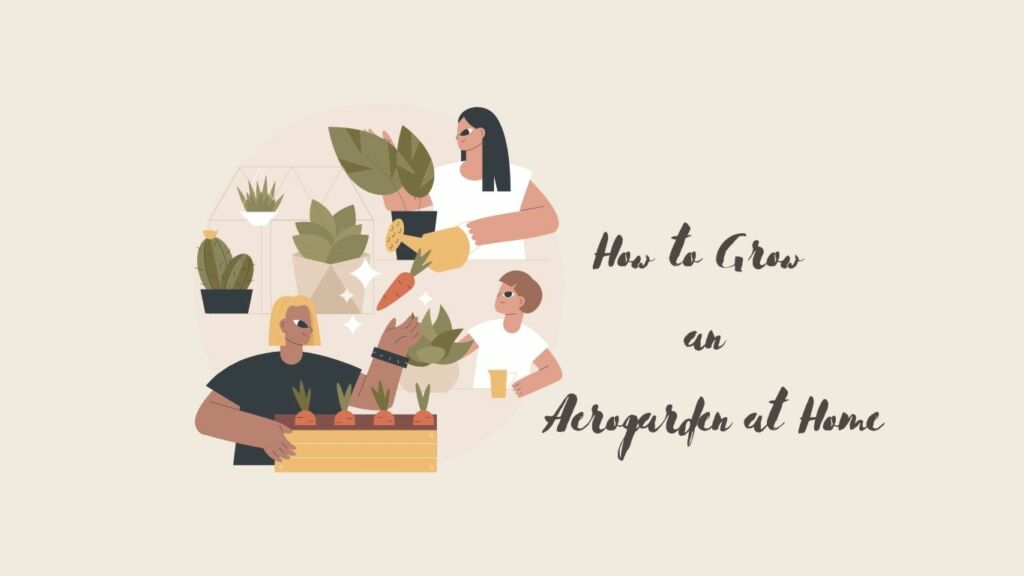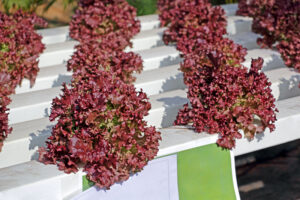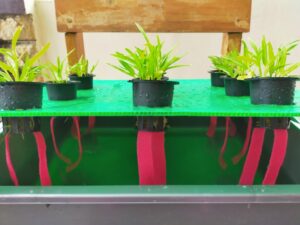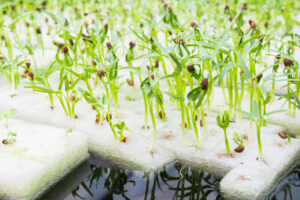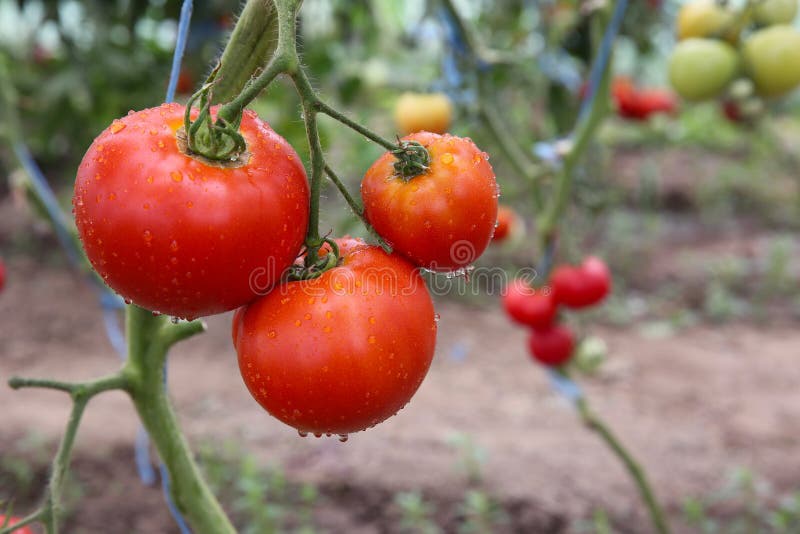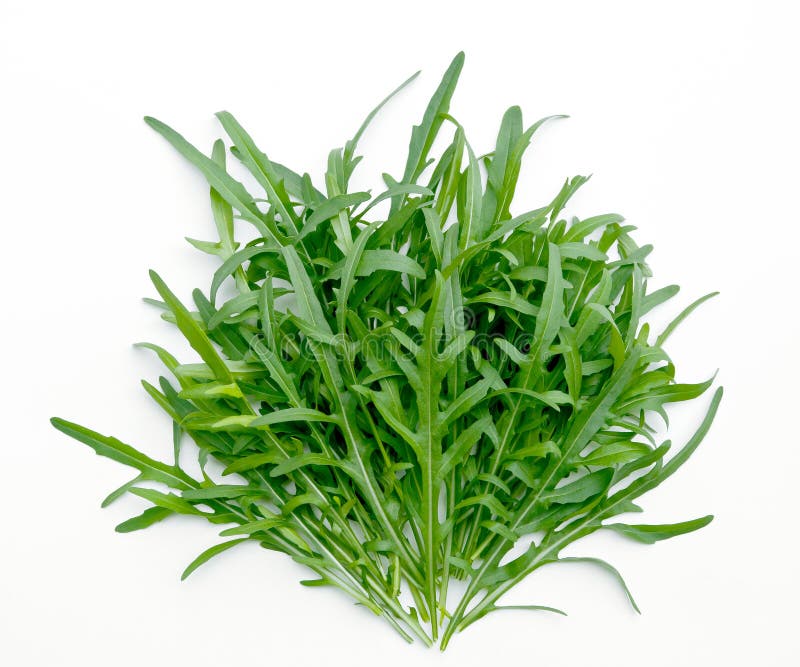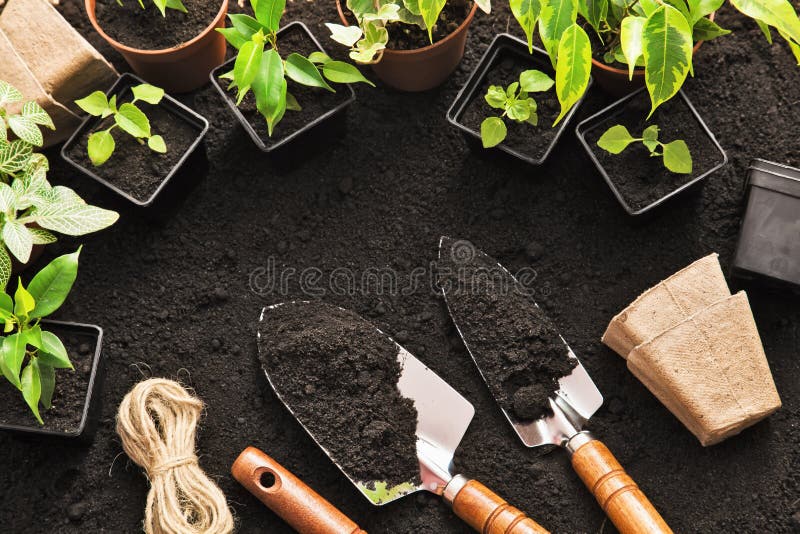HousePlantJoy is supported by our audience. When you purchase through one of our links, we may earn a small affiliate commission. As an Amazon Associate I earn from qualifying purchases. Your cost is not affected.
==================
Using an AeroGarden at Home
Do you want to grow your vegetables and flowers, but don’t have the space or time? An Aerogarden might be perfect for you! Aerogardens are small, tabletop gardens that use water and LED lighting to grow plants. You can grow various plants in an Aerogarden, including tomatoes, peppers, herbs, and strawberries. You can even grow flowers indoors! Using an Aerogarden is a great way to get fresh produce in your home. Plus, it’s a fun way to get into gardening. If you’re considering getting an Aerogarden, keep reading for more information.
Aerogardens are among the most popular types of gardens nowadays. Its popularity stems from the fact that there are many benefits regarding aerogardens. You can do this indoors, which is convenient to do. Another benefit of aerogarden at home would be how easy you can start and maintain it. This article will discuss how to choose, start, and maintain an aerogarden at home.
What Is an Aerogarden?
An aerogarden is a type of hydroponics setup similar to any indoor garden. The only difference is that the plants are not planted in soil or clay. But, in an inert growing medium such as perlite, vermiculite, coco coir, and Rockwool.
The roots of these plants do not require oxygen from the atmosphere. This is because they’re submerged in oxygenated water constantly.
Details About Aerogardens at Home
You can buy many kits and pre-made systems to grow your aerogarden at home. However, since we will discuss how to use one, we will wait to go into detail about this part. If you’d like to know more about the different types of hydroponic setups and kits, keep on reading.
How to Create an Aerogarden
Growing your aerogarden at home is possible even if you’re not a very experienced gardener or perhaps only have a little time for it. You only need to carefully research and read up on the basics of starting an aeroponics garden. You should also understand the different steps involved in doing so.
Many plans are available online to help you create your own aerogarden at home from scratch. This comes with further explanations on how to manage it properly once it has been set up.
You will also find many helpful videos which can be a good substitute for further reading. You are good to go as long as you have sufficient knowledge of how to use them. Here are some steps to take when growing an aerogarden at home:
1. Get a Kit or a Good Plan
This is the first step to take when you want to grow an aerogarden at home. There are kits available from different companies. It also has plans you can customize according to your preferences and accessible materials.
2. Get Hold of Sufficient Knowledge About Starting an Aeroponics Garden
Before proceeding with the whole process, you need to know how to plant and maintain your plants in this hydroponic system. You might need more resources for this part. But tons of resources online could lead you toward what you’re looking for. This is if you know where exactly to look.
3. Set up Everything Properly and Place It Somewhere Where Plants Can Thrive
There are different setups that you can create to start growing the plants. There are self-contained aeroponics systems, ebb&flow hydroponic systems, and many others. Each has its unique characteristics and means of setting up.
4. Perform Regular Maintenance on Plant Growth
This mainly consists of checking when to add nutrients or water. Your plants need light, or you need to remove them from the system if necessary. We will talk about this information in more detail below.
Aerogardening Kits
You can buy various types of ready-made hydroponic kits for your home garden. Some contain everything you need, such as fertilizers and lighting equipment. You might also need to buy other equipment depending on which type of plan or kit you choose. So, it is best to read up on the specifics before purchasing.
Ebb & Flow Hydroponic System
An ebb & flow hydro system requires lots of experience setting them up. This is because several factors come into play here. The plants are set up inside an enclosed tube that contains water.
At first, you should submerge the root in the nutrient solution for a certain period before allowing it to drain back into the tank.
Then, pump the water back into this closed system again and mix the nutrients before soaking the plant’s roots. This process will continue until the plants grow fully and bear fruits or vegetables at their ends.
Self-Contained Hydroponic Systems
This is the most accessible type of system to set up. This is because it only requires you to place the seeds into an enclosed container (such as a cup) containing nutrients. Then, you can start this closed aeroponics system right away. You can do so without requiring pumps or timers to regulate nutrient flow.
The tips mentioned above should help you get started on how to grow an aerogarden at home. Since there are different types of hydroponic systems, it is best to research more about each one before setting everything up.
When your plants start to grow, please ensure they are regularly cared for. You can check them daily to see if they need water or nutrients. Lastly, guarantee that the place where you set up your precious garden has enough sunlight and air circulation for the plants to remain healthy. This is important when they’re increasing without any form of stress.
If all else fails, you can always choose a company that offers pre-made plans for sale. You can do that until you have enough knowledge to create plans yourself.
Types of Aerogardening Systems
Aerogardening systems are often divided into three types: flood and drain, wick system, and deep water culture. Each has its distinct way of aerating the roots of the plants submerged in water. This way, they can always access what they need from it.
You can choose any type according to your preference and lifestyle or the number of people using the garden. This is because some setups might involve more work than others. Like any other hydroponics setup, you must carefully monitor your nutrient solution levels and pH balance before starting an aeroponics system.
This is important because if any of the above factors deviate from the recommended range by even just a little bit, your plants will not develop or grow as expected.
Here are the different types of aerogarden systems:
Flood and Drain
The system consists of a plastic tub containing nutrient solutions. You submerge the roots in the tank so the plants can absorb the water-based nutrients they need throughout their growing stages.
Aerogardens often use this kind of setup due to its low cost. However, it requires more time since you will constantly check on your plants daily to see if they need more or less water. Plus, while some people love how easy it is for beginners to set up this kind of aerogarden at home, others find it too messy for their tastes. This is because of all the drips that fall from above when refilling or draining water from these systems.
Wick System
The wick system is slightly different in the tank. You should divide it into two compartments with a clay wick that holds water in place. The top portion contains just enough nutrient solutions for the plant’s needs.
Meanwhile, the bottom half has enough room for the excess liquid to run off. This happens when levels get too high or when you add more water to it at least once every week.
This wick system’s roots are not submerged in the water. But, they do have constant access to it throughout their growing stage. This way, they can absorb all they need from it when required.
Before starting this aerogarden at-home setup, check if your plants can have time without watering them. This is the only way the solution level will drain back into its lower compartment after reaching a certain height.
Deep Water Culture
The deepwater culture system is also known as the raft system. This is because of its similarity to an actual raft, which you might use on a lake or river during summertime. This setup requires you to suspend your plants using their roots inside a separate container filled with nutrient solutions. But, they do not need any medium (like soil) to anchor them in a place like most other types of aeroponic systems.
It would be best to keep water levels steady while ensuring the dissolved oxygen remains between 3-5mg per liter. Doing so will make these plants thrive and develop and grow optimally. If you’re only starting out doing this for yourself, it’s best to keep things simple with your first aerogarden at home.
Things to Keep in Mind in Aerogarden at Home
Aerogardens are like all hydroponics systems; you must check the pH balance and nutrient solution level on a daily basis, if not more often. A high concentration of either basic or acidic elements will likely cause wilting or death to your plants. You need to make sure that the pH levels are normal.
If you do not know how to test for either of these values, investing in pre-made plan kits is best instead of spending time creating plans yourself. It could cost you more money than you’re willing to spend on an aerogarden at-home kit anyway.
There is no right or wrong way to set up an aerogarden at home. However, specific ways work better for some people, depending on size, personal preferences, etc. No matter which type of aero garden at-home setup you choose, you provide the care and maintenance for your plants to grow.
For this reason, we recommend that you always ask for help from experienced gardeners. Moreover, read up more about aeroponics before starting on its setup to avoid wasting time and money on wrong decisions.
Starting an Aerogarden at Home
If possible, don’t start an aerogarden at home without experience in hydroponic systems.
Using self-contained hydroponic kits is one option available. It requires no prior knowledge for setup. However, you choose a kit with different parts, such as nutrient pumps and timers, that can regulate airflow into the plane’s roots.
As with any other hydroponics system, ensure your plants receive enough light to grow healthy and strong. Putting them under the proper lighting during their growing stage gives them everything they need to flourish into mature plants ready for harvesting.
Although aeroponic systems are all considered self-contained to some degree, there are specific considerations regarding how much noise each type makes when used. If you have children or pets around the house or live in an apartment where this might concern other people, choose an aero garden at-home kit that is either completely silent or has sound-dampening capabilities not to bother anyone while it operates.
However, it’s best to make noise considerations a manageable barrier. Since aeroponics systems are primarily harmless unless you don’t go over the established limits for nutrients or pH levels, this is because these parameters determine whether or not your plants will be healthy enough to produce the desired yield of fruit and vegetables.
You can use aerogardens for growing indoor herb gardens as well as flowers. As with any other hydroponic system, you must use caution when purchasing one with more than one reservoir. They can drain into each other if they’re not separated by something like a waterproof membrane.
Best Seeds for Aerogarden at Home
People using aerogarden at home usually use it for growing vegetables, flowers, and herbs.
Top 6 Seeds to Grow in an Aeroponics System:
Basil
Most people know Basil as one of the most common plants used for cooking and seasoning food to give it a fresh flavor. You can also make it into an herbal tea to help calm and relax the body and mind. While usually considered a flavor additive, basil also provides some macronutrients, such as calcium and vitamin K, as well as a range of antioxidants.
Heirloom Baby Greens
Baby lettuces and greens make a delicious and healthy salad. Or use them on a sandwich or even as a bed for your entrée. Studies show these nutrition-packed phytochemicals offer a range of potential benefits, including anti-cancer and cell protection properties. They won’t add to your calorie count if you avoid adding that salad dressing.
Heirloom Baby Greens
Tomato
Tomatoes are rich in vitamins such as A, C, K, and B6, as well as folate, calcium, magnesium, potassium, and iron! No wonder they’re among the top choices for many people looking to grow veggies at home. This is especially true if you eat tomatoes raw to get their natural nutrients instead of cooked. In some cases, some don’t get absorbed by the body.
Tomatoes
Mint
Mint is often used for tea and as an ingredient in toothpaste or mouthwash. It has antibacterial properties that can help fight against plaque and bad breath. It also helps reduce anxiety, headaches, and digestive problems!
However, mint also acts as a stimulant. That’s great if you need an energy boost. But please don’t drink that mint tea at bedtime.
Mint leaves and tea
Cilantro
Cilantro is another herb with fantastic health benefits. It comes with antioxidants, Iron, Vitamin K, and Calcium, among other vitamins and minerals. You can eat cilantro raw to reap all these nutrients. But, some people would cook them instead since cooking makes their flavor milder than eating them fresh. Some use cilantro as a garnish for tacos or fajitas, especially if they’re not too keen on its strong taste.
Note: coriander is the seed form of cilantro.
Cilantro (herb) tied in a bunch.
Arugula
Arugula is part of the mustard family but has a much more peppery flavor than most cabbages, similar to wasabi or horseradish! Use it in salads, sandwiches, and pizzas! Some even eat it raw for its crunchy texture, while others cook it to retain most of its natural nutrients. Either way, arugula, when added to your meals, shows health benefits, including helping to control blood sugar levels and lose weight!
Arugula. A freshly picked bunch of Italian Arugula
Things to Consider for an Aerogarden at Home
If you want to try out the Aerogarden at home for yourself for a small vegetable or garden, then we recommend that you keep things simple and start with one reservoir and one plan. Doing this will make set-up much easier without having to worry about issues. Such issues are when your plants will be able to receive enough nutrients or light once you add everything.
However, once it started, many people added to their gardens. Some first go to the large home unit after testing one of the smaller units.
Growing Fruits in an Aerogarden
If you’re thinking of growing fruits instead, we recommend buying a model with three or more reservoirs. This will allow you to grow different varieties at the same time! When growing fruit plants, each plant needs its reservoir. This will enable them to develop to their full potential and yield as much as possible since they require particular nutrients (not ideal for veggies) such as calcium and magnesium.
Other than that, follow the manufacturer’s instructions. Use parts that are compatible with your aerogarden at-home model! You can even install an LED light set if you want. This way, your plants will stay lit longer than usual, especially during nighttime when most homes do not have windows where sunlight can come through. Moreover, it gives the plants the necessary light to photosynthesize!
Now that you know the best seeds for an aeroponics system, make sure they are specifically made for aeroponics. This way, your plants can get maximum health benefits and yield.
Make sure everything is compatible with your model of aerogarden at home. This includes the lights (if any) and other accessories to start growing your veggies at home!
Make Your Own Aerogarden Seed Pods
Seed pods are the central part of the aerogarden at home, allowing you to grow your plants quickly. They come with all their parts and accessories, including the lighting, the reservoir (bottom part), the net cup (where you place the seeds), and the support stand. Each seedpod comes with everything you need, so save yourself some money by buying other parts separately!
Most models either have different pods. This is where each pod contains its water tank, so it does not have to share any nutrients or light with others. You can fill up as much water as you want for this model if you plan on growing large vegetables. This includes tomatoes. But if your plants are smaller, it’s best to fill up half until they grow more significant if they need more!
Use Fewer Pods When Using Your AeroGarden at Home?
If you’re not growing any plants in one of the pods, use this part as a moisture sensor. This prevents the aerogarden from over-watering itself. This is better than leaving an empty pod inside since it can result in root rot, which could kill your plant.
Lastly, always make sure that your seed pods are compatible with the model of aerogarden at home you have before buying them on their own. If you do otherwise, they may not work correctly or, even worse, damage your machine!
Now, if you want to grow fruit instead of vegetables, ensure all parts are compatible with your hydroponic system. This includes lighting and base parts that will provide enough light for photosynthesis at night! You’ll want to buy a model with more than one reservoir. This way, you can fill each one up with different fertilizers to give your plants the health boost they need to increase.
Be careful to have only a few lights on since the plant may burn out faster! If there are lights on, then there should be no other light sources that might damage it or prevent it from growing.
Picking the Right Seeds for Your Aerogarden at Home
When picking seeds, please keep in mind that some of them have specific models. On the other hand, some are compatible with all aerogarden at-home models! Our top picks include melons, carrots, etc. These are great for beginners who want to spend less on seeds since they’re known as fast growers!
Of course, they won’t grow in just a few days like buying them in-store, but they’ll make your aerogarden at home look good over time! If you do not want to choose what seeds are included with the pod, how about growing some watermelons? Just be careful when harvesting it since the tiny seed will require lots of space for new growth. This can result in more setups and maintenance costs for larger aeroponic systems!
Most importantly, always use seeds designed explicitly for an aeroponics system. This way, your plants have everything they need to thrive. This includes quick growth rates and a constant supply of nutrients. That way, you can save money on nutrient supplements, especially if you plan on growing giant vegetables such as tomatoes!
Conclusion
When you start your aerogarden at home, please know what model you have, including the seed types and accessories that will be compatible with your pod! This way, you can figure out if it’ll grow faster or if you need to add nutrient supplements when growing more expensive vegetables, such as tomatoes!
After reading this article, when purchasing an aerogarden, only buy parts separately. Otherwise, they may need to work correctly, especially when re-ordering replacement pods, since they’re more challenging to find due to low demand for just one part.
Happy gardening!
Frequently Asked Questions
What types of plants can I grow in an AeroGarden at home?
You can grow a variety of plants, including vegetables like tomatoes, peppers, and herbs like basil and cilantro. You can also grow flowers and fruits depending on your AeroGarden model and setup.
How much maintenance does an AeroGarden require?
AeroGardens are relatively low-maintenance, requiring regular checks for water and nutrient levels, as well as occasional pruning and harvesting. Depending on the setup, you may need to adjust lighting and nutrient levels periodically.
Can I customize my AeroGarden setup?
Yes, you can customize your AeroGarden setup by choosing different types of AeroGarden systems, adding additional accessories like LED lights or trellises, and selecting specific seeds or pods tailored to your preferences and gardening goals.
Dive into a Green Oasis! Connect with Us for Gardening Bliss!
Discover a vibrant community dedicated to all things gardening and houseplants!
Get inspired with captivating content, insightful product reviews, and tips for nurturing your indoor and outdoor greenery. Join us on Facebook, Instagram, Pinterest, and Twitter for a daily dose of plant love and camaraderie.
Let’s cultivate joy together! #HouseplantJoy

